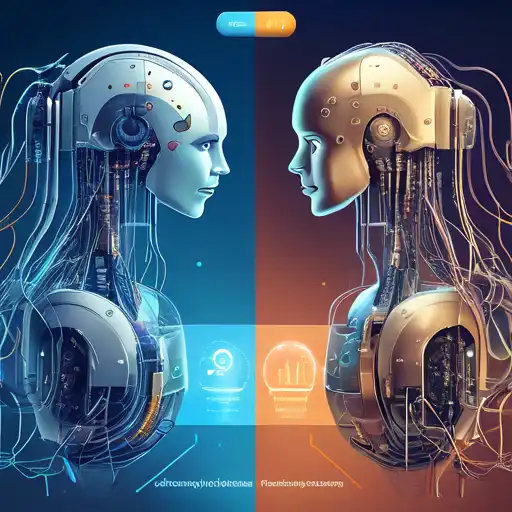Introduction to Machine Learning and Deep Learning
In the realm of artificial intelligence (AI), Machine Learning (ML) and Deep Learning (DL) stand out as two of the most pivotal technologies driving innovation. While they share common ground, their differences are significant and worth exploring for anyone looking to delve deeper into AI.
What is Machine Learning?
Machine Learning is a subset of AI that enables systems to learn from data, identify patterns, and make decisions with minimal human intervention. It encompasses various algorithms and models that improve over time as they are exposed to more data.
What is Deep Learning?
Deep Learning, a subset of Machine Learning, mimics the workings of the human brain in processing data for use in detecting objects, recognizing speech, translating languages, and making decisions. DL uses neural networks with several layers (hence the term 'deep') to analyze various factors in large amounts of data.
Key Differences Between Machine Learning and Deep Learning
Data Dependency
One of the primary differences lies in their data dependency. DL requires large amounts of data to understand and perform tasks accurately, whereas ML can work with smaller datasets.
Feature Engineering
In ML, feature engineering is crucial. Experts must identify and select the right features to train the model. DL, on the other hand, automatically discovers the features to be used for classification, reducing the need for manual feature engineering.
Computational Power
DL models are computationally intensive, often requiring powerful GPUs and large datasets to train. ML models are less demanding and can be trained on conventional CPUs.
Interpretability
ML models are generally easier to interpret and understand. DL models, with their complex neural networks, are often seen as 'black boxes' due to the difficulty in understanding how they arrive at their decisions.
Choosing Between Machine Learning and Deep Learning
The choice between ML and DL depends on the specific problem you're trying to solve, the amount of data you have, and the computational resources at your disposal. For problems with limited data or where interpretability is key, ML might be the better choice. For complex problems like image and speech recognition, DL is often more effective.
Conclusion
Understanding the differences between Machine Learning and Deep Learning is crucial for leveraging the right technology for your AI projects. While ML offers simplicity and efficiency for smaller-scale problems, DL provides the power and flexibility needed for tackling more complex challenges in the field of artificial intelligence.
For more insights into AI technologies, check out our articles on Artificial Intelligence and Data Science.
